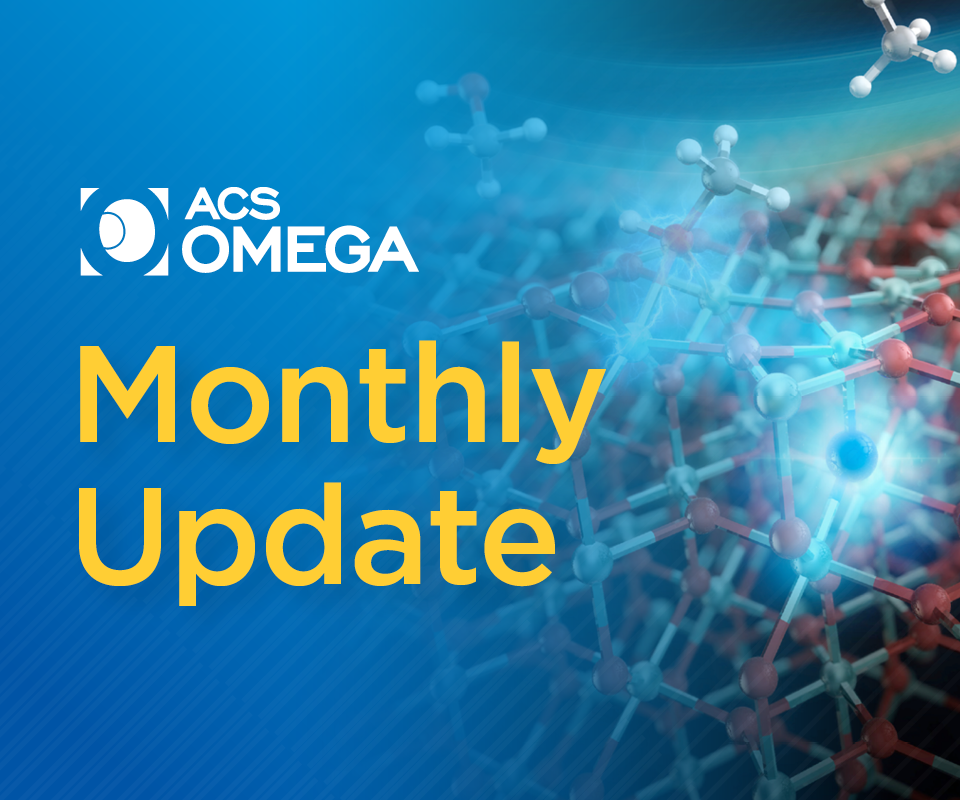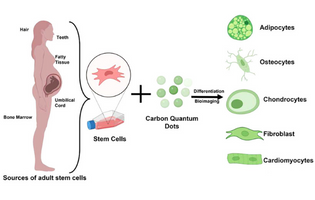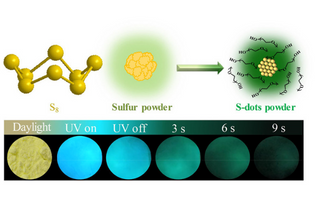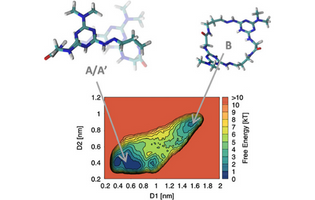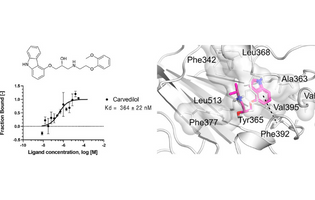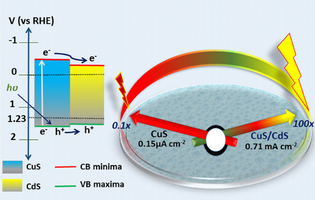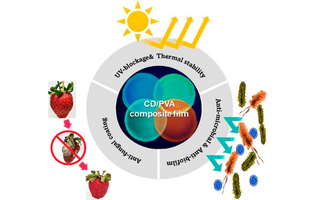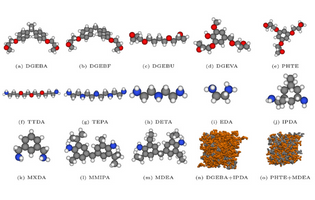What's New
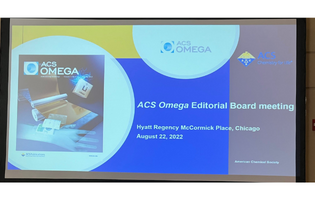
Exciting times ahead for the journal - a real "big tent" across all of chemistry
The Editorial Board of ACS Omega met during ACS Fall 2022 in Chicago in person and virtually to discuss journal progress and performance, with emphasis on future planning to continue to grow submissions and quality published output via a range of strategic editorial and marketing initiatives.
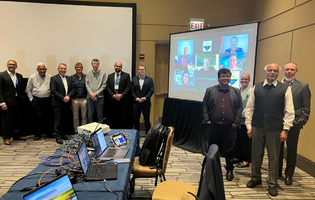
From left to right: Dr. Jhoan Toro Mendoza, Prof. Dipankar Chatterji, Dr. Jim Milne (President for ACS Publications), Prof. Johan Hofkens, Prof. Frank Quina, Dr. Dinesh Soares, Dr. Paul Goring, Prof. Sarbajit Banerjee and Prof. Krishna Ganesh.
Second line, left to right: Miss Katy Roberts and Dr. Martin Sugden from our marketing team. On the screen: Prof. Esra Capanoglu, Dr. Aditi Jain, Prof. Katja Skorb, Prof. Jesus Jimenez-Barnero, Dr. Silvia Imberti, Prof. Martina Costa Reis.
ACS Omega - In The News
There are, currently, close to 20 types of truffles sold for human consumption; of those, the most prized are grown in Europe, such as the fancy “white” and “black” truffles from orchards in Italy and France. For this reason, the bulk of truffle scholarship—including the scent characterizations and chemical compositions that help identify them—has focused on European species. This study aims to bring a North American truffle into the light, and in doing so, researchers may also have stumbled upon a better understanding of why humans love truffles.
Fast Company: Fighting the dark underbelly of truffle fraud: Chemists seek to ID a gastronomic ‘black diamond’
Reference: David Fortier, Jean-Christophe Séguin, Normand Voyer*, Characterization of the Volatilome of Tuber canaliculatum Harvested in Quebec, Canada, ACS Omega 2022, 7, 33, 29038–29045, DOI: 10.1021/acsomega.2c02877
Key Journal Metrics
- ACS Omega published 432 articles in August (a new all-time record!) for a total of 2,855 YTD. As compared to the equivalent timeframe in 2021, this represents a 30% increase in published output.
- Articles published by ACS Omega were downloaded 713,237 times in August, which represents a 29.4% increase in usage compared to the equivalent time period in 2021.
Published Issues
pp. 25906-26992
pp. 26993-27768
pp. 27769-28684
pp. 28685-29525
Featured Articles
To date, most research has focused on stem cell tracking and imaging using Carbon Quantum Dots (CQDs), whilst their interaction with stem cells and the associated possibility for differentiation by selectively focusing chemical signals to a particular lineage has received scant attention. In this mini-review, we attempt to categorize a few pathways linked with the role of CQDs in stem cell differentiation.
Misba Majood et al. Amity University, India
ACS Omega 2022, 7, 33, 28685–28693
Elemental sulfur is not traditionally considered as an afterglow material, even though it can be endowed with fluorescence properties through processing it into nanodots. In this manuscript it is described that elemental sulfur powder could emit room temperature phosphorescence (RTP) with a lifetime of 3.7 ms. A long-lived (>12 s) afterglow emission at 77 K could also be observed by the naked eye. Detailed investigations suggested that such a special phenomenon was attributed to impurity-related traps coupled with conduction and valence bands.
Jiaqi Guo et al. The Hong Kong University of Science and Technology & The Chinese University of Hong Kong, China
ACS Omega 2022, 7, 34, 30582–30589
Inspired by therapeutic potential, the molecular engineering of macrocycles is garnering increased interest. Exercising control with design, however, is challenging due to the dynamic behavior that these molecules must demonstrate in order to be bioactive. Herein, the value of metadynamics simulations is demonstrated.
Riccardo Capelli, Alexander J. Menke, et al. Politecnico di Torino, Italy & Texas Christian University, United States
ACS Omega 2022, 7, 34, 30291–30296
In this paper, the authors make relevant contributions to the development of oral antiviral drugs to treat COVID-19 infection. By using several experimental techniques (MST, nanoDSF, and cell assays) and molecular docking calculations, the authors confirmed the potential of four beta-blockers molecules to bind to the SARS-CoV-2 spike protein.
Ana C. Puhl, Carolina Horta Andrade, Sean Ekins et al.
ACS Omega 2022, 7, 32, 27950–27958
Virtual screening is a commonly used process to search for feasible drug candidates from a huge number of compounds during the early stages of drug design. As the compound database continues to expand to billions of entries or more, there remains an urgent need to accelerate the process of docking calculations. This paper demonstrates a proof-of-concept where reuse of calculation results was used to this aim. The code is available under an MIT license.
Keisuke Yanagisawa et al., Tokyo Institute of Technology, Japan
ACS Omega 2022, 7, 34, 30265–30274
The increasing demand for efficient and cost-effective solar cells promoted an immense amount of search for stable, nontoxic, and earth-abundant solar absorber materials. Binary CuS is an alternative to rare-earth element-based semiconductors with an inexpensive and bulk synthesis method. CuS nanoparticle synthesis via one-pot solution-processed and chemical bath methods are energy-efficient and low-cost synthesis methods.
Gulistan Y. Shaikh et al. Pune University, India
ACS Omega 2022, 7, 34, 30233–30240
Active food packaging has become attractive because of the possibility to provide a longer shelf-life by loading functional agents into the packages to maintain the quality of food products. In this study, photoluminescent and transparent polyvinyl alcohol (PVA)-based composites embedding multicolor fluorescent carbon dots (CD/PVA) show potential as non-cytotoxic, UV-blocking antimicrobial additives for the development of edible coatings and packages for their use in the food industry, as well as pharmaceutical and healthcare applications.
Melis Özge Alaş et al. Mersin university, Turkey
ACS Omega 2022, 7, 34, 29967–29983
Epoxies are some of the most prominent thermosetting polymers valued nowadays due to their wide range of applications thanks to theirversatility. The final material can be easily modulated by the chemical structure of the epoxy or the nature of the hardener, responsible for the striking thermal and mechanical properties of the resulting material.
Therefore, it is of great importance to be able to characterize them and comprehend the influence of the structural network on their properties. However, one of the greatest challenges is to be able to reproduce reliably the physical, mechanical, and thermodynamic properties of such materials from atomistic models.
Mathilde Orselly* et al. Université Clermont Auvergne, France
ACS Omega 2022, 7, 34, 30040–30050
Previous Newsletters
Click below to view a previous ACS Omega Monthly Update
© 2025 American Chemical Society, 1155 16th St NW, Washington, DC 20036, USA. View our Privacy Policy


